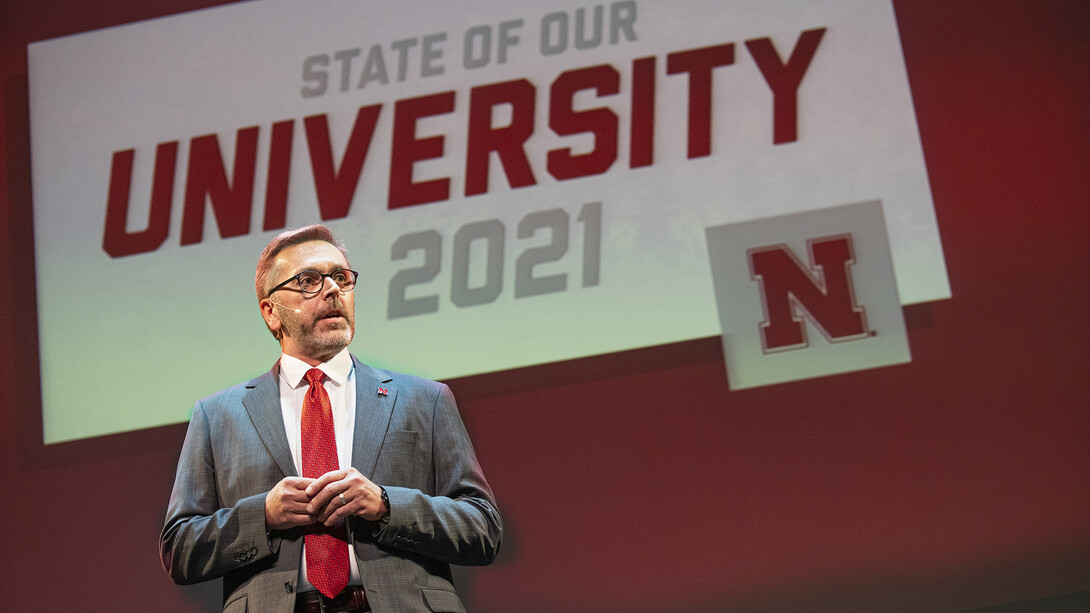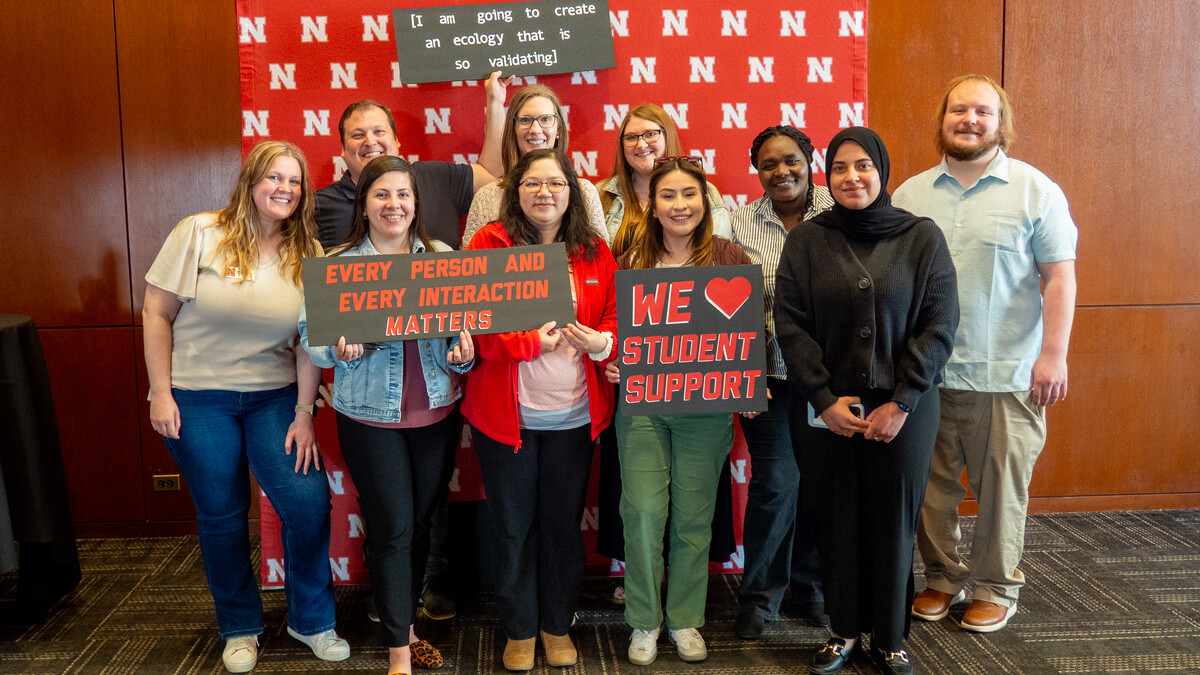
With a nod toward successes realized in a turbulent year, Chancellor Ronnie Green’s 2021 State of Our University address built upon the N2025 strategic plan, outlining seven “Grand Challenges” that will help direct Huskers’ ongoing research and creative activity.
Delivered on Feb. 15 — 152 years from the day in 1869 that the state legislature chartered the University of Nebraska — Green’s forward-leaning address included a video showcasing 2020 challenges and successes, and individual reports from top academic leaders.
Green opened with a look back on the year and how the university community’s pivots in the face of a global pandemic, civil unrest and economic challenges helped maintain positive momentum.
“I have never been prouder of our institution and its people,” Green said. “We saw the obstacles, we stepped up with unparalleled commitment to deliver on our mission, and we have met the challenge — and then some.
“The fact is, we didn’t just persevere, we have led — in the Big Ten and across higher education.”
Green directed the Nebraska “can-do” spirit into the announcement of the seven Grand Challenges for research and creative activity.
“Called for in two of our N2025 aims, these Grand Challenges leverage our university’s existing strengths and seek to solve big, overarching issues that are important to Nebraska and the world,” Green said. “I am eager to move forward aggressively, including with new strategic investments in the coming year ahead.”
In the address, Green divided the challenges into two categories — the first four being areas the university is already established as a global leader, the final three as topics that the last year has shown that the university “must be engaged.”
The seven Grand Challenges are:
- Sustainable Water and Food Security;
- Early Childhood Education and Development;
- Climate Change, Mitigation and Resilience;
- Quantum Science and Engineering;
- Anti-racism and Racial Equity;
- Health Equity; and
- Science and Technology Literacy for Society.
“I am tremendously excited at the work done across the campus to develop and hone these Grand Challenges,” Green said. “They are necessary work and distinct opportunities for our university to have an even greater defining impact for Nebraska and our world.”
Additional details on each of the Grand Challenges will be announced.
Green also outlined the importance of the university’s pursuit of anti-racism and racial equity. This included an overview of the creation of the university’s Journey for Anti-Racism and Racial Equity and selection of six co-leaders.
“(The six co-leaders) have worked diligently over the fall and into this year to define the initial stages of the journey, which we will chronicle on our website,” Green said. “As I have come to learn and appreciate, this will be very hard and challenging work and a long-term process.”
Along with the journey, the university has identified ways to strengthen its commitment to inclusive excellence. Those include:
Developing a clearer and more transparent process for addressing climate issues that may impede an individual’s participation on campus based on their identity;
Examining how current curriculum addresses diversity with a focus on race, privilege and power;
Creation of a chancellor’s reading program focused on race and identity each academic semester, starting in fall 2021; and
Holding university leadership team at the chancellor’s cabinet and Academic Leadership Council levels accountable for developing anti-racist and inclusive excellence strategies.
“Making progress to be more inclusive, anti-racist and to achieve racial equity is not the work of a single group or department,” Green said. “It falls to all of us to be committed and engaged.”
Other State of Our University highlights included:
A “thank you” from Green to every member of the campus community who assisted with the continuation of the university’s teaching, research and outreach missions through the ongoing pandemic.
The university saw only slight reductions in enrollment when national trends signaled double-digit declines.
Annual research expenditures remained strong at $314 million.
Faculty awards, including Ray Hames being named to the National Academy of Sciences; and new AAAS fellows Craig Allen, Roch Gaussoin, Kristin Olson and Jim Takacs.
The announcement that Kathleen Lodl, associate dean of Nebraska Extension, will take a new leadership role advancing the N2025 aim around engagement, including the university’s quest to become a Carnegie Community Engagement designated campus by 2023;
The university moving up two spots in the U.S. News and World Report rankings, to 62nd among public institutions. Nebraska was also the only member of the Big Ten to see improvements in peer assessment scoring in each of the last two years.
Nebraska Athletics continued its tradition of academic excellence, with an NCAA graduation rate of 94%. This was second only to Northwestern University in the Big Ten Conference.
Successful navigation of budgetary reductions due to COVID-19. Green thanked campus leaders for making challenging and strategic decisions that ultimately protected the university’s core academic programs and mission. Looking ahead, Green said the budget situation appears strong as Governor Pete Ricketts and the Nebraska Legislature have committed to fully-funding the university’s budget request for fiscal years 2022 and 2023.
While impacts of the pandemic, social unrest and economic impacts will continue to shape future directions, Green predicted that some of the university’s greatest days lie immediately ahead.
“I believe with every ounce of my being that we will come through this crucible-like time more than ever as a leader, not a follower,” Green said. “I believe we will come through it more united in purpose and mission. I believe the creative ingenuity unleashed in this moment in time will continue to empower us to scale to greater heights. And, I know our passion and dedication will always remain, driven by the critical and foundational role that higher education plays in achieving a better future.”
The chancellor’s entire State of Our University address is available for review here.







